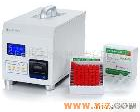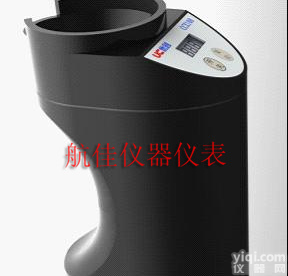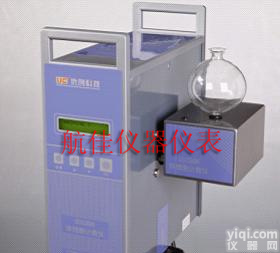“英拜为您实验加速”
技术服务网址:http://www.yingbio.com/
服务热线:400-696-6643、 18019265738
邮箱:daihp@yingbio.com 、 huizhang1228@foxmail.comMelanoma qBiomarker Mutation PCR Array
黑色素瘤qBiomarker体细胞突变PCR芯片 | Product | Species | Technology | Cat. No. |
| Melanoma qBiomarker Mutation PCR Array | Human | Somatic Mutation | SMH-029A |
The Human Melanoma qBiomarker Somatic Mutation PCR Array is a translational research tool that allows rapid, accurate, and comprehensive profiling of the top somatic mutations in human melanoma in the following genes: BRAF, CDKN2A, CTNNB1/beta-catenin, GNAQ, HRAS, KIT, KRAS, NRAS, PIK3CA, and LKB1/STK11. These mutations warrant extensive investigation to enhance the understanding of carcinogenesis and identify potential drug targets. Numerous research studies have demonstrated the utility of individual and multiple somatic mutation status information in identifying key signaling transduction disruptions. For example, the mutation status of the EGFR and KRAS genes can predict the physiological response to certain drugs targeting these molecules. The Human Melanoma qBiomarker Somatic Mutation PCR Array, with its comprehensive content coverage, is designed for the study of mutations in the context of melanoma and has the potential for discovery and verification of drug target biomarkers for this cancer type and other cancer types in which these mutations have been identified. This array includes 37 DNA sequence mutation assays designed to detect the most frequent, functionally verified, and biologically significant mutations in human melanoma. These mutations were chosen from curated, comprehensive somatic mutation databases and peer-reviewed scientific literature, and represent the most frequently recurring somatic mutations compiled from over 5600 melanoma samples. Each 96-well array allows profiling of the mutation status of 2 samples, while each 384-well format array allows mutation profiling of 8 samples. The simplicity of the product format and operating procedure allows routine somatic mutation profiling in any research laboratory with access to real-time PCR instruments.
黑色素瘤qBiomarker体细胞突变PCR芯片是一个翻译研究工具,用于快速,准确,全面剖析人类黑色素瘤样本体细胞突变的关键基因:BRAF, CDKN2A, CTNNB1/beta-catenin, GNAQ, HRAS, KIT, KRAS, NRAS, PIK3CA, and LKB1/STK11.。这些突变保证广泛的研究,以提高致癌作用的理解和鉴定潜在的药物靶点。已有许多研究通过单个和多个体细胞突变状态信息鉴定关键信号转导中断。例如,EGFR和KRAS基因的突变状态可以预测某些药物针对这些分子的生理反应。人黑色素瘤qBiomarker体细胞突变PCR芯片以其全面的内容覆盖范围,用于研究黑色素瘤的环境突变且有潜力用于发现靶向药物的生物标记和验证这些癌症和其他这些突变已确定的癌症。这个芯片包含37个DNA突变序列用于检测Z频繁的,功能性验证,在人类黑色素瘤具有重要生物学意义的突变。这些突变的选择根据全面的体细胞突变数据库和同行评审的科学文献,来自5600多个黑色素瘤样本发生Z频繁重复编译的体细胞突变。每个96孔芯片可以分析2个样品的突变状态,每个384孔芯片可以对 8个样本进行突变分析。简单的产品模式和操作程序让任何一个具备实时定量PCR仪的实验室都可进行常规的体细胞突变分析。
BRAF: 7 AssaysThere are two major classes of BRAF mutations. One class leads to increased BRAF kinase activity, such as the p. V600E mutation. The other class leads to impaired kinase activity, such as the p.G469A mutation.
CDKN2A: 7 AssaysThe top CDKN2A loss-of-function mutations occur in the consensus ankyrin domain, which leads to inability to form stable complexes with its targets.
CTNNB1: 2 AssaysThe most frequently detected CTNNB1/beta-catenin mutations result in abnormal signaling in the WNT signaling pathway. The mutated codons are mainly several serine/threonine residues targeted for phosphorylation by GSK-3beta.
GNAQ: 2 AssaysThe mutations queried by these assays all lie in the protein's GTP nucleotide binding domain.
HRAS: 1 AssayThe most important HRAS mutation in melanoma occurs at codon 61.
KIT: 2 AssaysThe most frequently identified KIT gain-of-function mutations include the D816V point mutation, the exon 11 (juxtamembrane domain) deletion and point mutations, an exon 9 insertion mutation, and exon 13 point mutations.
KRAS: 3 AssaysThe mutation assays include the most frequently occurring mutations in KRAS codons 12, 13, and 61. Mutations at these positions result in reduced intrinsic GTPase activity and/or cause KRAS to become unresponsive to RasGAP.
NRAS: 11 AssaysThe mutation assays include the most important NRAS mutations at codons 12, 13, and 61.
PIK3CA: 1 AssayThe most frequently occurring PIK3CA mutations mainly belong to two classes: gain-of-function kinase domain activating mutations and helical domain mutations that mimic activation by growth factors.
STK11: 1 AssayThe most commonly detected STK11/LKB1 inactivation mutations are mainly due to truncation or point mutations.
工作原理:
Overview of the qBiomarker Somatic Mutation PCR Array / Assay Protocol

Overview of the qBiomarker Somatic Mutation PCR Array / Assay Protocol.
The procedure involves DNA extraction (QIAGEN QIAamp DNA Mini Kit or FFPE Tissue Kit is recommended), an optional amplification (QIAGEN REPLI-g kit or REPLI-g UltraFast kit is recommended) step for DNA isolated from fresh samples, qPCR detection on qBiomarker Somatic Mutation PCR Arrays or Assays, and data analysis (using the qBiomarker Somatic Mutation Data Analysis Template). An optional DNA sample QC step immediately before the detection array or assay setup allows the user to qualify the DNA samples.
Principle of Mutant Discrimination with ARMS®

资料下载:
QIAGEN实时定量PCR芯片技术服务资料.pdf
附件下载 (下载 0 次)
请 [登录] 后再下载!
 黑色素瘤qBiomarker体细胞突变PCR芯片Melanoma qBiomarker Mutation PCR Array
黑色素瘤qBiomarker体细胞突变PCR芯片Melanoma qBiomarker Mutation PCR Array
![[免疫学试剂] 一抗 抗原抗体 Anti-CD117/c-kit/SCFR干细胞生长因子受体/细胞表面分化抗原抗体](https://item.yiqi.com/pic/CovPic/1/201084144136290.jpg) [免疫学试剂] 一抗 抗原抗体 Anti-CD117/c-kit/SCFR干细胞生长因子受体/细胞表面分化抗原抗体
[免疫学试剂] 一抗 抗原抗体 Anti-CD117/c-kit/SCFR干细胞生长因子受体/细胞表面分化抗原抗体
![[免疫学试剂] 一抗 抗原抗体 Anti-CD34(C-term)CD34抗体(细胞表面的唾液粘蛋白)C端蛋白多肽](https://item.yiqi.com/pic/CovPic/1/20108416123637.jpg) [免疫学试剂] 一抗 抗原抗体 Anti-CD34(C-term)CD34抗体(细胞表面的唾液粘蛋白)C端蛋白多肽
[免疫学试剂] 一抗 抗原抗体 Anti-CD34(C-term)CD34抗体(细胞表面的唾液粘蛋白)C端蛋白多肽
![[免疫学试剂] 一抗 抗原抗体 Anti-CD34 CD34抗体(细胞表面的唾液粘蛋白)](https://item.yiqi.com/pic/CovPic/1/201084155439518.jpg) [免疫学试剂] 一抗 抗原抗体 Anti-CD34 CD34抗体(细胞表面的唾液粘蛋白)
[免疫学试剂] 一抗 抗原抗体 Anti-CD34 CD34抗体(细胞表面的唾液粘蛋白)
![[细胞及相关培养] ATCC引进细胞 R 1610(ZG仓鼠<em>体细胞</em>)](https://item.yiqi.com/pic/CovPic/1/201082495410493.jpg) [细胞及相关培养] ATCC引进细胞 R 1610(ZG仓鼠体细胞)
[细胞及相关培养] ATCC引进细胞 R 1610(ZG仓鼠体细胞)
 Nucleo Counter意大利ASTORI-体细胞计数器
Nucleo Counter意大利ASTORI-体细胞计数器
 BJ3-ADAM 体细胞计数仪
BJ3-ADAM 体细胞计数仪
 CC100 便携式体细胞计数仪
CC100 便携式体细胞计数仪
 SCC300 SCC300体细胞计数仪
SCC300 SCC300体细胞计数仪
 356830/356831/356832/356834/ Magna 微载体细胞培养瓶
356830/356831/356832/356834/ Magna 微载体细胞培养瓶
 ADAM-SCC ADAM-SCC便携体细胞测定仪
ADAM-SCC ADAM-SCC便携体细胞测定仪
 干细胞生长因子受体/细胞表面分化抗原抗体
干细胞生长因子受体/细胞表面分化抗原抗体